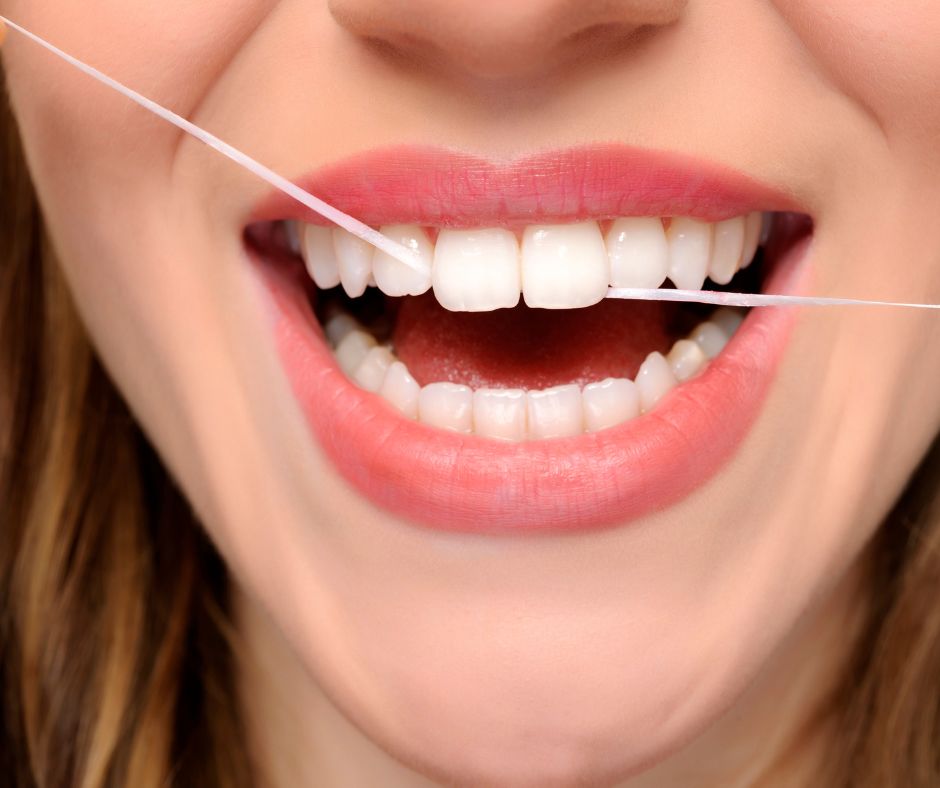Blog Page & News Articles
The Importance of Flossing: A Key to Optimal Oral Health
Author: Dr Behnam Aminnejad. Posted: 27.01.25
Maintaining good oral hygiene is crucial for overall health, and flossing is an integral part of this regimen. While brushing
your teeth is a common practice, many people underestimate the significance of flossing. In this article, we will explore the
benefits of flossing, proper techniques, and the impact it can have on your oral health:
Benefits of Flossing
- 1. Plaque and Tartar Removal: Flossing helps to remove plaque and food particles from areas between teeth that a toothbrush can't reach. If left unattended, plaque can harden into tartar, leading to gum disease and cavities.
- 2. Prevention of Gum Disease: Gum disease, also known as gingivitis or periodontitis, can result from the buildup of plaque and tartar. Flossing is an effective way to prevent gum disease by eliminating the source of infection between teeth and along the gumline.
- 3. Cavity Prevention: Flossing complements brushing in preventing cavities. Removing debris from between teeth reduces the risk of decay, ensuring that your entire oral cavity remains healthy.
- 4. Bad Breath Control: The bacteria that thrive in the leftover food particles between teeth contribute to bad breath. Flossing regularly helps maintain a fresh breath by preventing the buildup of these odor-causing bacteria.
- 5. Preservation of Tooth Structure: Flossing is crucial for preserving the integrity of your teeth. When debris accumulates between teeth, it can lead to erosion and damage to tooth enamel, compromising the overall structure of the tooth.
Proper Flossing Technique
- 1. Choose the Right Floss: There are various types of dental floss available, including waxed, unwaxed, flavored, and tape. Choose a type that you find comfortable and easy to use.
- 2. Amount Matters: Use about 18 inches of floss. Wind the ends around your middle fingers, leaving about 1-2 inches of floss for maneuvering.
- 3. Proper Holding Technique: Hold the floss tightly between your thumbs and forefingers, leaving about 1-2 inches in the middle for actual flossing.
- 4. Gentle Glide: Curve the floss into a C-shape against one tooth and gently slide it beneath the gumline. Be careful not to force the floss, as it can cause injury.
- 5. Repeat: Repeat the process for each tooth, using a clean section of the floss each time. Don't forget the back side of the last molars.
In Summary
Incorporating flossing into your daily oral care routine is a small but powerful step toward maintaining optimal dental health. Beyond brushing, flossing helps prevent gum disease, cavities, and bad breath, ensuring your smile stays bright and your teeth stay healthy. By dedicating a few minutes each day to flossing, you can significantly improve your overall oral hygiene and contribute to a healthier, happier you.
Read more of Dr Behnam Aminnejad's dental care articles and tips: Back to Blog

Why Choose Us?
- Master's degree in Endodontic (Root canal treatment)
- Almost 30 years experience
- All dental treatments are individually tailored to your specific needs
